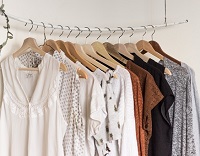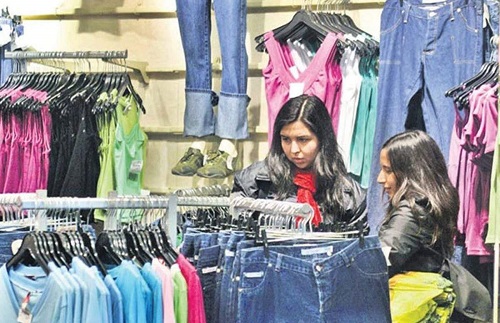 The fashion industry has been hit hard by COVID-19 outbreak that has upended industries around the world. As ‘The State of Fashion 2020 Coronavirus Update’ by McKinsey reveals, the global revenue for the fashion industry is expected to drop by 27 to 30 per cent this year. Fashion powerhouses around the world are taking on this battle against the pandemic in a crucial pivot from producing clothes to manufacturing protective masks, gowns, and other supplies. For instance, Bvlgari has diverted its production to manufacturing of 6,000 bottles of hand sanitizers per day. Similarly, L’oreal and LVMH are producing hand sanitizers to combat the shortage of supplies.
The fashion industry has been hit hard by COVID-19 outbreak that has upended industries around the world. As ‘The State of Fashion 2020 Coronavirus Update’ by McKinsey reveals, the global revenue for the fashion industry is expected to drop by 27 to 30 per cent this year. Fashion powerhouses around the world are taking on this battle against the pandemic in a crucial pivot from producing clothes to manufacturing protective masks, gowns, and other supplies. For instance, Bvlgari has diverted its production to manufacturing of 6,000 bottles of hand sanitizers per day. Similarly, L’oreal and LVMH are producing hand sanitizers to combat the shortage of supplies.
Fashion retailers to suffer due to low demand
The increasing trend of prioritizing necessary items over discretionary items spells bad news for offline fashion retailers most of whom have been forced to close their stores. Online retailers are also suffering with their sales declined by almost 20 per cent in Europe, 30 per cent in the US, and 15-25 per cent in China. This trend is expected to continue for the rest of 2020 as the industry will take a long time to recover from these economic, financial and social losses of the pandemic.
Moderate rise for home and sportswear apparels
In future, demand for home-wear and sports-wear items will see a moderate rise as trend of work from home trend will continue to grow. This will present brands with an opportunity to re-evaluate and reset previous strategies and start afresh. They will have to emerge either as a revived player or fade away.
brands with an opportunity to re-evaluate and reset previous strategies and start afresh. They will have to emerge either as a revived player or fade away.
Effective communication to help grab attention
Post the COVID 19 pandemic retailers will have to communicate their campaigns in an effective way to grab customer attention. They will also have to implement a website overlay, hello bar or a welcome banner to inform their visitors about discounts they are offering.
McKinsey also says, post-COVID 19, online shopping is expected to grow by 18 per cent while social channels will grow by 24 per cent. This will give retailers a great opportunity to reach out to their offline shoppers by using tools like Insider’s Journey Builder.
Retailers can introduce a combination of discounts + free shipping to improve customer engagement online. They can attract consumers with their discount strategies and hard to resist minimum value offers for free shipping.
Strategies retailers can adopt
Retailers can tap the growing stay-at-home culture by creating top-trending and relevant product collections crafted for the occasion. They can use platforms like Insider’s InStory to promote these collections on website in the form of stories. They can also design and deliver their experiences by asking the right questions on Insider’s Maven. They can also convey the changes in their shipping and return policies through this app.
More and more consumers are moving online, and this trend will continue even after things will get back to normal. Only brands that respond rapidly and innovatively to these changes will survive.
New tools across the value chain
To cope with new restrictions and overcome the damaging impact of the pandemic, brands must introduce new tools and strategies across the value chain. Fashion players must harness these innovations and scale up those that work in order to make radical and enduring changes to their organizations—and to the wider industry—after the dust settles.
While these short term measures are important in weathering out this storm, the fashion industry is at a crucial junction. Fashion marketers will need to introduce long-term strategies and adopt sustainable tactics that look beyond the immediate future.











